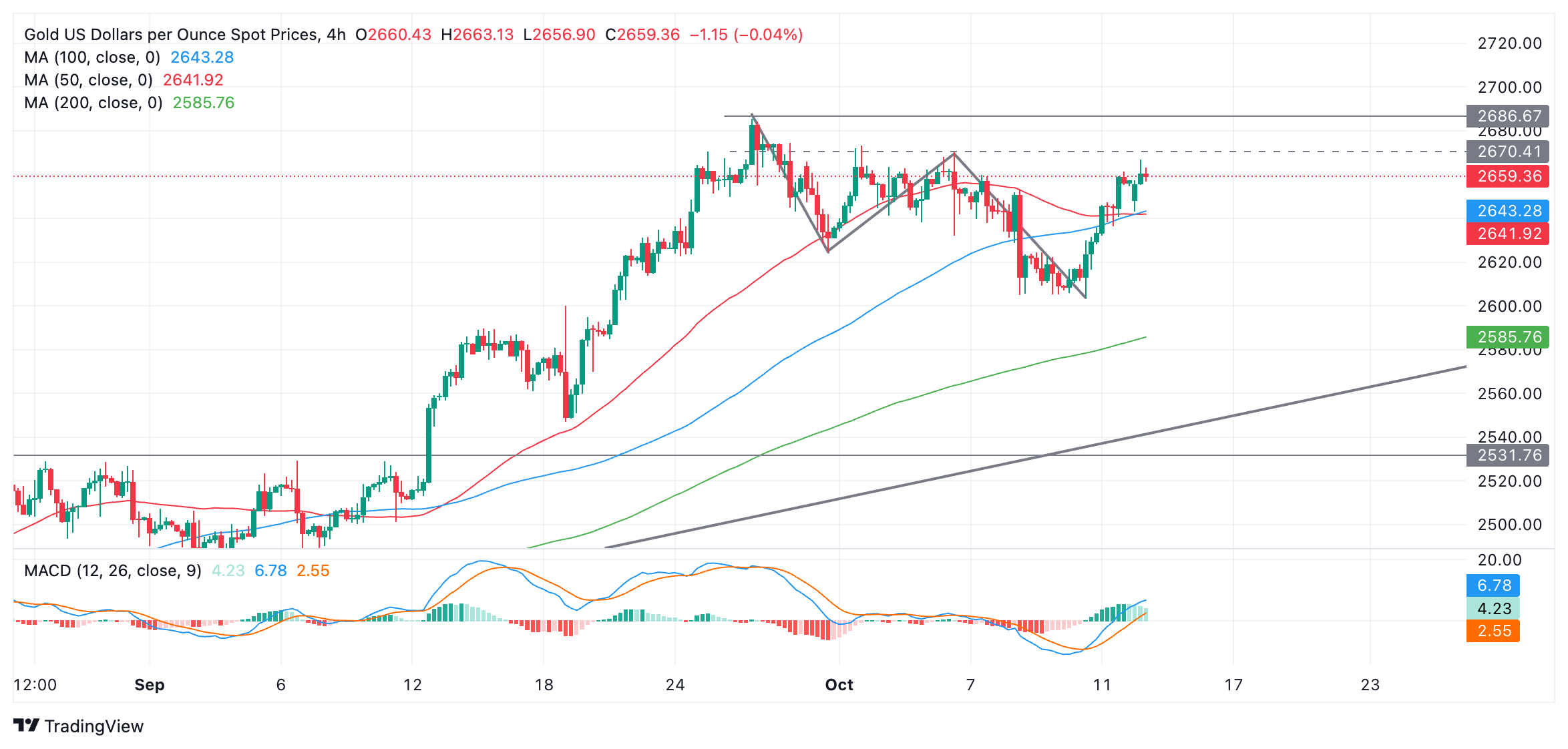Gold holds gains on China saber-rattling, stimulus expectations
- Gold rises on haven demand after Chinese military drills in the strait of Taiwan create an international incident.
- China’s fiscal stimulus also supports Gold as the country is the largest market for the yellow metal.
- Technically, XAU/USD reaches a key resistance level at the top of its multi-week range.
Gold (XAU/USD) recovers to trade back in the $2,660s on Monday amid rising safe-haven demand after saber-rattling by the Chinese People's Liberation Army (PLA) in the strait of Taiwan. This prompted a spokesperson from the US Department of State to say on Monday, that they were “seriously concerned” with the PLA’s activities in around Taiwan.
Gold rises on China factor
Gold may also be gaining due to a more positive outlook for the Chinese economy as the country is the largest market for the precious metal. On Saturday, Chinese Finance Minister Lan Fo’an announced a much-anticipated fiscal stimulus programme. Although no figures were given, he said Beijing would help regional governments tackle their debt problems with a large-scale local government debt swap.
Lan further suggested the government’s stimulus package could mark a multi-year turning point in China's “fiscal policy framework”.
More central bank rate cuts in the pipeline
A further driver for Gold is the continued downward projected path of interest rates globally. The European Central Bank (ECB) will conclude its October meeting on Thursday and most analysts expect the bank to announce another 25 basis point (bps) (0.25%) rate cut – their second cut in a row. Such a move would signal a significant “gear change up” in terms of the pace and timing of the ECB’s easing cycle.
In the US, meanwhile, investors expect a 25 bps rate cut from the Federal Reserve (Fed) in November after US Producer Price Index (PPI) inflation data on Friday showed headline PPI was unchanged on a monthly basis in September – missing expectations of a 0.1% increase and the prior month’s 0.2% reading. Core PPI inflation, which excludes volatile food and energy prices, slowed to 0.2% from 0.3% in August.
Annual readings, however, resulted mixed, as PPI decelerated while core PPI rose by 2.8%, above the prior month’s 2.6%. Although mixed annual performance, the monthly readings weighed, as did the preliminary US Michigan Consumer Sentiment Index for October, which fell below September’s reading and analysts’ estimates.
The CME FedWatch Tool is showing the markets are now pricing in around a 90% chance of a 25 bps Fed rate cut – up from 83% before the PPI data.
Technical Analysis: Gold on the rise
Gold appears to have completed a correction at the October 10 lows and is rising again.
It has reached a resistance level at around $2,670 from a row of previous highs including the October 1 and 4 highs (dashed line). A close above would probably lead to a continuation up to the $2,685 all-time high.
XAU/USD 4-hour Chart
The Moving Average Convergence Divergence (MACD) has risen above the zero line and is in positive territory, which is a mildly bullish indication.
There is also a chance the pair could bounce off resistance and start pulling back down into its familiar range between $2,620 and $2,670. This would extend the range-bound move seen since late September.
Gold’s medium and long-term trends are also bullish. If one of these longer-term cycles resumes, it could, in theory, push the asset to even higher highs.
Economic Indicator
ECB Main Refinancing Operations Rate
One of the three key interest rates set by the European Central Bank (ECB), the main refinancing operations rate is the interest rate the ECB charges to banks for one-week long loans. It is announced by the European Central Bank at its eight scheduled annual meetings. If the ECB expects inflation to rise, it will increase its interest rates to bring it back down to its 2% target. This tends to be bullish for the Euro (EUR), since it attracts more foreign capital inflows. Likewise, if the ECB sees inflation falling it may cut the main refinancing operations rate to encourage banks to borrow and lend more, in the hope of driving economic growth. This tends to weaken the Euro as it reduces its attractiveness as a place for investors to park capital.
Read more.Next release: Thu Oct 17, 2024 12:15
Frequency: Irregular
Consensus: 3.4%
Previous: 3.65%
Source: European Central Bank

